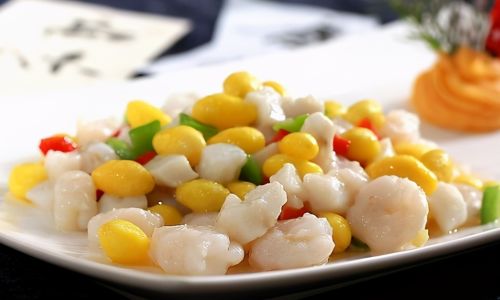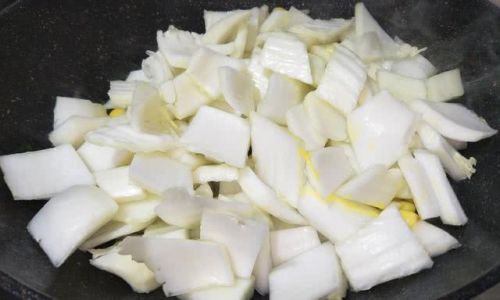Table of content
Frozen eel, often overlooked in home kitchens, is a versatile and flavorful ingredient that can transform ordinary meals into gourmet experiences. Whether you’re a seafood enthusiast or a curious home cook, learning to prepare frozen eel properly unlocks a world of culinary possibilities. This article explores the nuances of selecting, thawing, and cooking frozen eel to perfection, along with innovative recipes and tips to elevate your dishes.
Understanding Frozen Eel: Types and Quality
Before diving into cooking methods, it’s essential to grasp the basics of frozen eel. Eels are categorized into species like Anguilla anguilla (European eel) and Anguilla japonica (Japanese eel), each offering distinct flavors and textures. Frozen eel is typically sold whole, filleted, or in pre-cut segments. When purchasing, look for products labeled “sushi-grade” or “previously frozen” to ensure safety and quality. Avoid packages with freezer burn or excessive ice crystals, as these indicate improper storage.
Thawing Frozen Eel: The First Step to Perfection
Thawing eel correctly is critical to preserving its texture and flavor. Improper thawing can lead to mushy flesh or uneven cooking. Here are three reliable methods:
-
Refrigerator Thawing:
Transfer the frozen eel to a sealed container or plastic bag and place it in the refrigerator. Allow 12–24 hours for thawing, depending on the size. This slow method maintains moisture and prevents bacterial growth.
-
Cold Water Bath:
Seal the eel in a leak-proof bag and submerge it in a bowl of cold water. Change the water every 30 minutes to keep it cold. Thawing takes 1–3 hours, making it ideal for impatient cooks. -
Microwave Defrosting (Use with Caution):
While convenient, microwaves can partially cook the eel, resulting in uneven texture. If using this method, opt for short intervals (1–2 minutes) on the defrost setting and cook immediately after.
Preparing Eel for Cooking: Cleaning and Seasoning
Freshly thawed eel requires minimal preparation but benefits from careful handling:
-
Removing Sliminess:
Eels have a natural mucus coating. Rinse the fish under cold water and scrub gently with salt or a rough cloth to eliminate slipperiness. Pat dry thoroughly to ensure crispy skin during cooking. -
Deboning and Filleting (If Needed):
Whole eels have a central backbone. Use kitchen shears or a sharp knife to cut along the spine and remove the bones. For fillets, run the knife along the rib cage to separate the flesh. -
Marinating for Flavor:
Marinades enhance eel’s rich taste. A classic Japanese-style marinade combines soy sauce, mirin, sake, ginger, and garlic. For Western flavors, try olive oil, lemon zest, rosemary, and black pepper. Marinate for 30 minutes to 2 hours, depending on the recipe.
Cooking Methods: From Grill to Simmer
Eel’s firm texture and mild sweetness adapt to various cooking techniques. Experiment with these methods to find your favorite:
Grilling: Smoky Char and Crispy Skin
Grilling imparts a smoky flavor while rendering the skin irresistibly crisp.
-
Steps:
- Preheat the grill to medium-high (375–400°F/190–200°C).
- Oil the grates to prevent sticking.
- Grill eel fillets skin-side down for 4–5 minutes, then flip and cook for another 3–4 minutes.
- Baste with a glaze (e.g., teriyaki or honey-soy) during the last 2 minutes.
-
Pro Tip: Use a fish basket to prevent small pieces from falling through the grates.
Baking: Tender and Moist Results
Baking is foolproof for achieving tender eel without constant monitoring.
-
Steps:
- Preheat the oven to 375°F (190°C).
- Place eel fillets on a parchment-lined baking sheet.
- Brush with marinade or melted butter and bake for 15–20 minutes.
- For extra crispiness, switch to broil mode for the final 2 minutes.
-
Pro Tip: Wrap eel in foil with vegetables (e.g., onions, bell peppers) for a one-pan meal.
Pan-Frying: Golden Perfection
Pan-frying creates a caramelized crust while keeping the flesh moist.
-
Steps:
- Heat 2 tbsp of oil in a nonstick skillet over medium heat.
- Cook eel fillets skin-side down for 3–4 minutes until golden.
- Flip and cook for another 2–3 minutes.
- Serve with lemon wedges or a tangy sauce.
-
Pro Tip: Use a splatter screen to contain oil during frying.
Simmering: Flavorful Braises
Simmering eel in broth or sauce infuses it with deep, savory flavors.
-
Steps:

- Sauté aromatics (garlic, ginger, onions) in a pot.
- Add eel pieces and pour in broth (dashi, chicken, or vegetable).
- Simmer gently for 15–20 minutes until tender.
- Finish with soy sauce, mirin, or a splash of vinegar.
-
Pro Tip: Thicken the sauce with cornstarch for a glossy finish.
Recipes to Impress: From Traditional to Modern
Grilled Eel with Teriyaki Glaze
A Japanese classic, unagi no kabayaki features sweet-savory glaze and tender flesh.
Ingredients:
- 4 eel fillets (6 oz each)
- 1/4 cup soy sauce
- 1/4 cup mirin
- 2 tbsp sake
- 2 tbsp brown sugar
- 1 tbsp grated ginger
- 1 garlic clove, minced
- 1 tbsp vegetable oil
Instructions:
- Whisk soy sauce, mirin, sake, sugar, ginger, and garlic in a bowl.
- Marinate eel for 30 minutes.
- Preheat grill to medium-high. Brush grates with oil.
- Grill eel 4 minutes per side, basting with marinade.
- Serve over steamed rice with pickled vegetables.
Braised Eel in Tomato-Fennel Broth
A Mediterranean-inspired dish with bright acidity.
Ingredients:
- 2 lbs eel fillets, cut into 2-inch pieces
- 1 tbsp olive oil
- 1 fennel bulb, thinly sliced
- 1 onion, diced
- 3 garlic cloves, minced
- 1 cup diced tomatoes (canned or fresh)
- 1 cup white wine
- 1 cup fish or vegetable broth
- 1 tsp smoked paprika
- 1/4 cup chopped parsley
Instructions:
- Heat oil in a Dutch oven. Sauté fennel, onion, and garlic until soft.
- Add tomatoes, wine, broth, and paprika. Simmer 10 minutes.
- Add eel pieces and simmer 12–15 minutes until tender.
- Garnish with parsley and serve with crusty bread.
Eel Sushi Rolls (Unagi Sushi)
Elevate sushi night with homemade eel rolls.
Ingredients:
- 1 cup sushi rice, cooked and seasoned
- 4 sheets nori seaweed
- 1/2 lb cooked eel (store-bought or homemade)
- 1 avocado, sliced
- 1 cucumber, julienned
- 2 tbsp toasted sesame seeds
- Soy sauce and wasabi for serving
Instructions:
- Place a nori sheet on a bamboo mat. Spread rice evenly, leaving 1 inch at the far edge.
- Layer eel, avocado, and cucumber horizontally.
- Roll tightly, moistening the far edge to seal.
- Slice into 8 pieces and sprinkle with sesame seeds.
Expert Tips for Flawless Eel Dishes
-
Avoid Overcooking:
Eel becomes dry and tough when overcooked. Use a meat thermometer to target 145°F (63°C). -
Balance Richness:
Eel’s fatty texture pairs well with acidic ingredients like lemon, vinegar, or pickled vegetables. -
Leftovers? Repurpose!
Flake leftover eel into stir-fries, pasta, or omelets. -
Sustainability Note:
Choose eel from farms with eco-friendly practices to protect wild populations.
Conclusion: A World of Flavor Awaits
Cooking frozen eel need not be intimidating. With proper thawing, seasoning, and cooking techniques, this once-exotic ingredient can become a staple in your kitchen. Whether grilled, baked, or simmered, eel rewards adventurous cooks with its unctuous texture and adaptability. Experiment with global flavors, from Japanese teriyaki to Mediterranean braises, and discover why chefs and home cooks alike cherish this unique fish.
So, the next time you spot frozen eel at the market, seize the opportunity to create a meal that’s both impressive and deeply satisfying. Your taste buds—and dinner guests—will thank you.






0 comments